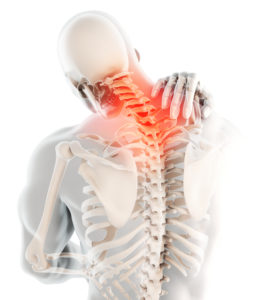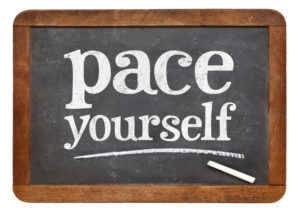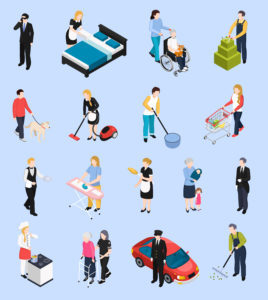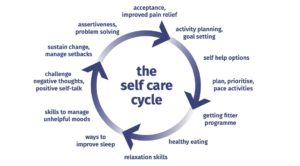Pacing For Pain
Find out how to put some 'pacing' into your life, using activity to manage pain
 Are you in pain?
Are you in pain?
For a great many of our beneficiaries pain is part of daily life – and it’s often severe. When you’re struggling with pain the last thing you might want to do is exercise, or get out and about – it makes you want to give up some of the things you do altogether; but that’s actually the last thing you should do.
Keeping active can help you manage pain – improve your mood and increase your wellbeing but you mustn’t overdo it.
Many of you will fall into what is known as the “boom or bust cycle”; on a ‘good day’, when your pain levels are lower, or you just have a few ‘niggles’, you’ll do all your activities or tasks in one go. This can make you feel wiped out the next day and cause pain to flare up which lasts for days. Over time, it can mean you avoid or give up those activities altogether to avoid the flare ups.
So how do you get the balance right and stay active without causing a flare up?
Pacing can be a way of breaking this cycle. It’s a management technique recommended by lots of pain experts, including pain consultants. Pacing puts YOU back in control of the pain and can help you continue doing the things you enjoy.
Read our blog and put some pacing into your life.
Pacing – in short
- Chronic pain can stop you doing the things you enjoy or need to do.
- You can find yourself in a “Boom or bust cycle” i.e. doing too much on a good day which causes a pain “flare up” that can last for days.
- Staying active is important to help manage pain and increase health and well-being.
- Pacing can be used to help manage pain and simply means breaking tasks down into smaller chunks of time and taking regular breaks. This can break the “boom and bust” cycle.
- Remember to take a break before you start to feel any discomfort.
- Over time, you can gradually increase the amount of time you spend on activities - in small increments.
- Don’t do more than you planned, even if you feel well.
- Use family or friends or consider paying someone help you. Consider using your Health Grant for this.
- Think about the activities that you get the most enjoyment out of and do them in preference over ones you don’t enjoy
- Prioritise- it is OK not to do everything today.
Want to know more? – read on for the full low-down.
Pacing explained
 Pacing is essentially breaking down tasks or activities into smaller chunks of time and taking regular breaks to allow your body to recover.
Pacing is essentially breaking down tasks or activities into smaller chunks of time and taking regular breaks to allow your body to recover.
It means finding how long can do a particular activity for, without causing a pain flare up. When you know your limits, you can gradually increase your activity levels over time.
Many of us adopt a “stiff upper lip” and force our way through activity when we’re actually in pain. Medical professionals also used to routinely advise people to “push through the pain” but we now realise just how damaging this can be.
It’s really important to listen to your body and take regular breaks when you need to as it will actually lead you to do MORE over time, not less.
Avoiding activity and the things you enjoy doing, could lead to more pain and stiffness, low mood and more disability.
Pacing is a way of striking that happy balance between rest and movement.
What pacing means in practice
Although it may seem a strange way of going about things, pacing involves breaking up activities into much smaller, more manageable steps.
If you’re cooking, for example, this may mean taking breaks between getting the ingredients together, preparing them, cooking and laying the table.
Basically pacing is putting a break in between each of these steps before you feel any discomfort. So depending on what you’re doing, it can be anything from putting a break in every 5 minutes, for every 10 minutes of activity; or, if it’s something like hoovering, you might do 10 minutes in the morning, and 10 minutes in the evening.
You’ll find this allows you to do more, overall, than if you had “pushed on through” to get the whole lot done in one go.
What and how to pace
 Any activity that hurts, or that you know causes you a pain flare-up, should be paced; this could be walking, gardening, cooking, hoovering or driving.
Any activity that hurts, or that you know causes you a pain flare-up, should be paced; this could be walking, gardening, cooking, hoovering or driving.
Working out the length of time you can do any activity before taking a break can be tricky - the answer lies in really listening to your body, and by trial and error. You’ll need to think about each activity or job in turn, and consider the duration of the particular activity, what speed you can go at, and how far you can go (for driving or walking).
Think about hoovering, for example; ask yourself, “How long can I hoover before it hurts?” This is your baseline for activity.
Don’t worry if it’s only a few minutes, pacing is an effective way of slowly building the amount you can do over time.
Need a bit more help? Take a look at cleaning, for example....
How long can I clean for before I start to feel any ‘niggles’, or feel sore?
A breakdown might be;
- 30 minutes of cleaning will definitely cause a flare up of my pain
- 20 minutes makes me sore
- 15 minutes may mean starting to get a few ‘niggles’
- But 10 minutes I can do comfortably.
So, 10 minutes would be your baseline and the point at which you take a break- even if you feel like you could do more.
Building up activity over time
 Try increasing your activity by just 30 seconds above your baseline line every week but don’t go over your target even if you’re not in pain – you don’t want to fall into the “boom and bust trap”.
Try increasing your activity by just 30 seconds above your baseline line every week but don’t go over your target even if you’re not in pain – you don’t want to fall into the “boom and bust trap”.
You may find 30 seconds extra too little, or too much, depending on what you’re doing, so keep tweaking it until you get it right. It’s not an exact science so you just need to experiment. Keeping an activity diary and logging your results day by day can be really helpful.
It’s really important to be in tune with your body and not to increase the activity if you feel any stiffness or pain.
There may well be a limit to how much you an increase an activity by- but that’s fine too. Don’t try and push yourself to a level you don’t feel comfortable at and always remember to take regular breaks.
Use the timer on your mobile to remind you to take a break.
Try and enjoy the rest. You could use it for some relaxation techniques or five minutes of mindfulness, a type of meditation that you can do via an app like ‘Headspace’ or ‘Calm’. Otherwise you can use the break to have a glass of water, listen to the radio or to text a friend.
Pacing doesn’t mean doing everything
Think about all the activities you do and prioritise the most important.
Is it preparing dinner, with your partner, or perhaps spending time gardening? Think about what you get real enjoyment from and prioritise those tasks above others.
Ask for help from family or friends; or consider paying someone to do some of the work. This could come out of your Health Grant and will free you up to spend more time on the activities you enjoy. Allowing people to do more for you can give you greater freedom and independence to do the things you really enjoy. Don’t feel guilty for prioritising things- it’s ok not to get everything done.
Think about planning your week ahead and alternating heavier tasks with lighter ones-keeping a schedule can be really handy for this.
Managing flare ups
Flare-ups and set backs are a normal part of pacing and managing pain.
Don’t get disheartened; go back to a level of activity you can manage and try building up slowly again. This may mean cutting down on your activity initially, and taking more breaks than usual.
Over time, and with practice, pacing can make you feel more confident in managing your pain and will allow you to stay active.
Remember you may find a particular activity has a ceiling of how much you can do it. Don’t feel bad about this, by sticking to the limits you set, it means you can do more overall and reduce pain “flare-ups”.
"Put pain in its place, with pacing"
If you’d like to know more take a look at this Learning To Pace Yourself video on the Pain Toolkit website , call the Trust on 01480 474974 and ask for one of the Medical Advisers, or email us. We can give you more information and answer any questions.
Find out more about self-care to help manage pain

